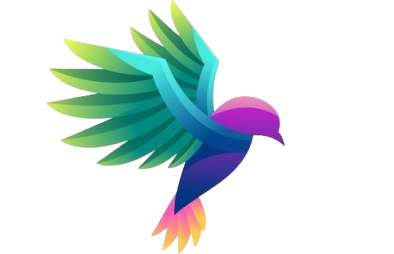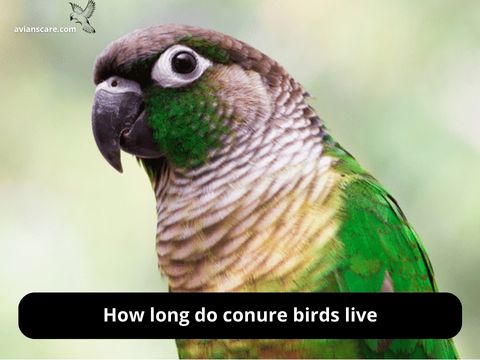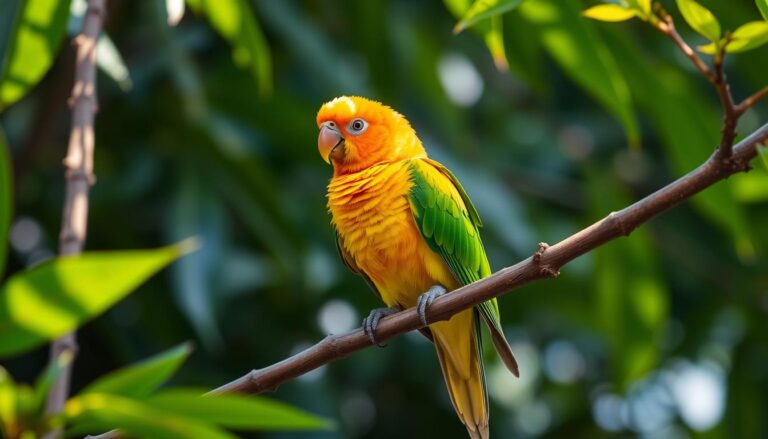Blue Spix Macaw: World’s Rarest Parrot
The Blue Spix Macaw is a rare gem in the bird world. Once common in Brazil’s forests, it’s now almost gone. Only a few birds remain. People are working hard to save this beautiful parrot from disappearing.
This parrot, known as Cyanopsitta spixii, has bright blue feathers that amaze many. But, it faces threats like lost habitats and illegal trade. Saving the Blue Spix Macaw is key to keeping its beauty alive for future generations.
Key Takeaways
- The Blue Spix Macaw is one of the world’s rarest parrot species, with a dwindling population.
- Habitat loss and illegal wildlife trade have contributed to the species’ critical endangered status.
- Conservation efforts, including captive breeding programs and release initiatives, are crucial to the Blue Spix Macaw’s survival.
- Understanding the historical distribution, physical characteristics, and social behavior of the Blue Spix Macaw is essential for effective conservation strategies.
- The Blue Spix Macaw’s cultural impact and representation in media have helped raise awareness about the importance of preserving this unique species.
The Legacy of the Blue Spix Macaw in Nature
The blue spix macaw, a captivating parrot, has made a lasting impact on Brazil’s nature. Found in the Caatinga region, it was a key part of the ecosystem. It played a crucial role in keeping the environment in balance.
Historical Distribution and Natural Habitat
The blue spix macaw, also known as the little blue macaw, was found in northeastern Brazil. It lived in the Caatinga biome, a unique and arid area. This environment, with its sparse vegetation and seasonal rains, was perfect for the spix macaw.
Its range was limited, but it was once common in the region. It played a vital role in the local ecosystem.
Physical Characteristics and Unique Features
The blue spix macaw is a stunning bird with a distinct blue plumage. Its slender build and long, pointed beak helped it survive in the Caatinga. It foraged for seeds, fruits, and nuts.
Its unique vocalizations, including a melodic call and distinctive whistles, were a part of its native soundscape.
Social Behavior in the Wild
In the wild, the blue spix macaw was highly social and cooperative. It lived in small family groups, working together to find food and defend their territory. The spix macaw had strong pair bonds, with couples staying together for life.
This social structure was crucial for its survival in the challenging Caatinga ecosystem.
https://www.youtube.com/watch?v=_rdcg5BTA_w
The blue spix macaw’s legacy is one of beauty, resilience, and ecological importance. Understanding its role in the Caatinga biome is vital as we work to save it.
Current Conservation Status and Population Numbers
The blue spix macaw, once a vibrant part of Brazil’s ecosystems, is now facing a precarious existence. The IUCN Red List classifies the species as critically endangered. As of 2023, only a few individuals remain in the wild.
Conservationists have made big efforts to protect the blue spix macaw. They estimate that there are fewer than 120 blue spix macaws in captivity. And, there is only a single individual known to exist in the wild.
| Year | Blue Spix Macaw Population |
|---|---|
| 2023 | Fewer than 120 in captivity, 1 in the wild |
| 2020 | Fewer than 100 in captivity, 1 in the wild |
| 2015 | Fewer than 80 in captivity, none in the wild |
The low numbers of blue spix macaws have raised big concerns. Conservation groups are working hard to protect and reintroduce the species. Their goal is to save the blue spix macaw from becoming extinct.
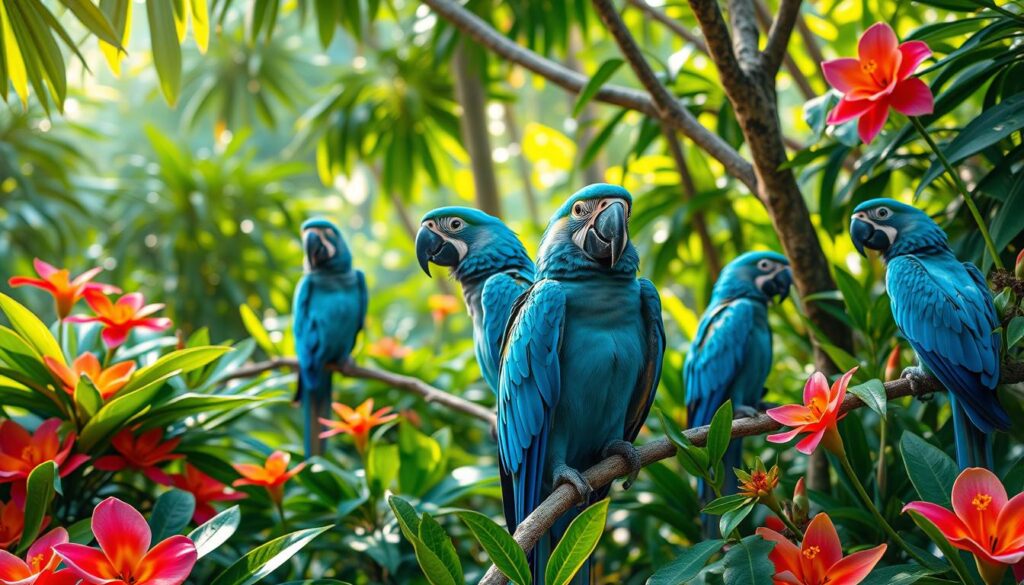
The Journey to Near Extinction
The blue Spix macaw, once a vibrant species, now faces near extinction. This parrot, native to Brazil’s dry forests, has seen many challenges. These have pushed it to the edge of disappearance.
Primary Threats and Challenges
Many threats have harmed the blue Spix macaw. Deforestation and habitat loss are key issues. The birds’ homes are being cleared for farming, cities, and mining.
The illegal wildlife trade also hurts them. Poachers capture these birds for the exotic pet market. This has greatly reduced their numbers.
Impact of Habitat Loss
Habitat loss has devastated the blue Spix macaw. The destruction of their homes has cut off their food and shelter. This has sharply reduced their population.
Now, they find it hard to survive in the remaining habitats. They are isolated and struggling to thrive.
Effects of Illegal Wildlife Trade
The illegal trade in blue Spix macaws has worsened their situation. Poachers capture these birds for the black market. This has made their population even smaller.
This makes saving the species harder. Conservation efforts face a big challenge.
| Reason | Impact |
|---|---|
| Deforestation and Habitat Loss | Loss of nesting sites, foraging grounds, and essential resources, leading to population decline |
| Illegal Wildlife Trade | Poaching and capture of birds for the exotic pet market, further depleting the already dwindling population |
The blue Spix macaw’s journey to near extinction is a sad story. It shows the damage of environmental harm and human greed. But, with new conservation efforts, there’s hope for their recovery.
Blue Spix Macaw: Behavior and Intelligence
The Blue Spix Macaw was once the world’s rarest parrot. It’s a true marvel of bird intelligence and unique behavior. These birds, from the Rio de Janeiro region of Brazil, have amazed scientists and the public for years.
These birds can make many sounds and solve problems. They can even mimic human speech. Their smarts are like those of African Grey Parrots, making them popular pets.
In the wild, Blue Spix Macaws can fly amazingly. They can do complex tricks and even fly backwards. Their bright blue feathers and flying skills have made them famous, especially in the movie “Rio.”
Despite facing habitat loss and illegal trade, the Blue Spix Macaw is still a resilient species. They capture hearts and minds, whether seen in person or through media.

“The Blue Spix Macaw is a true marvel of avian intelligence, with the ability to mimic human speech and perform complex aerial maneuvers that leave us in awe.”
Breeding Programs and Recovery Efforts
The Blue Spix Macaw, once thought to be extinct, is now the focus of many conservation efforts. These efforts aim to bring back its population. The 2024 global blue spix macaw population is a key indicator of this progress.
International Conservation Initiatives
Groups like the IUCN and the Brazilian government are leading these efforts. They work on habitat restoration, anti-poaching, and community education. Their goal is to ensure the Blue Spix Macaw’s survival.
Captive Breeding Success Stories
Captive breeding has been crucial for the Blue Spix Macaw’s recovery. Zoos and conservation centers worldwide have bred them successfully. The aim is to reintroduce them to their natural habitats.
Release Programs in Brazil
Brazil, the Blue Spix Macaw’s native home, is leading the reintroduction efforts. With international help, they release captive-bred birds into protected areas. This aims to create self-sustaining populations.
| Conservation Initiative | Key Achievements | Blue Spix Macaw Population (2024) |
|---|---|---|
| IUCN Conservation Efforts | Habitat restoration, anti-poaching patrols, community engagement | Estimated at around 200 individuals |
| Captive Breeding Programs | Successful breeding and maintenance of genetic diversity | Approximately 150 individuals in captivity |
| Brazil Release Programs | Reintroduction of captive-bred birds to protected areas | Gradual increase, with the goal of establishing self-sustaining populations |
These efforts have made a big difference in the Blue Spix Macaw’s recovery. While it’s still endangered, the progress is promising. It gives hope for the future of this unique parrot.
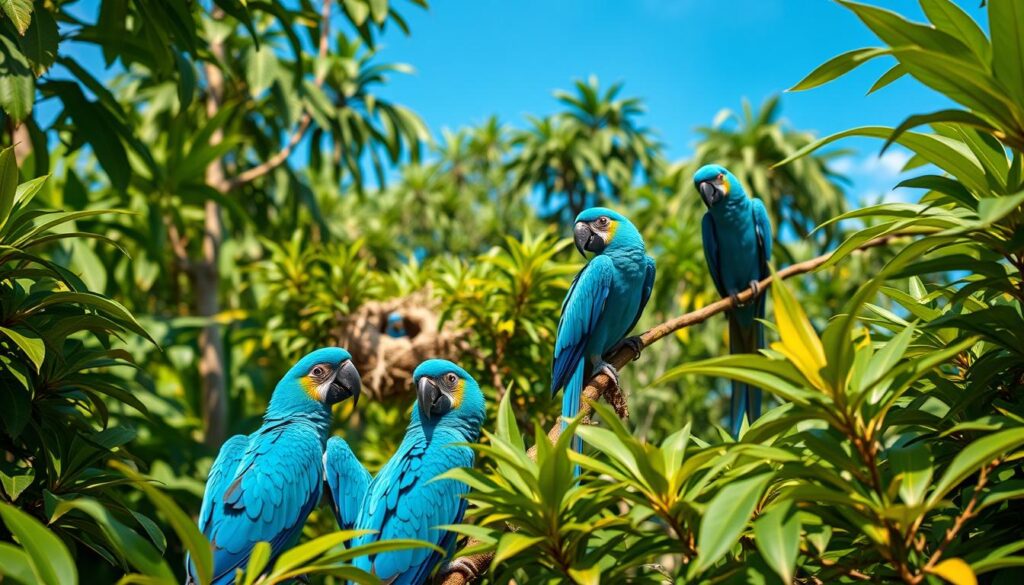
Cultural Impact and Media Representation
The blue Spix’s macaw has captured the world’s heart, going beyond science and conservation. This rare parrot, from Brazil’s Rio de Janeiro, stands as a symbol of hope and the delicate balance of nature.
In the movie “Rio,” this parrot shone brightly, winning fans with its beauty and charm. The film not only entertained but also highlighted the need to save the species. It inspired many to learn about the blue Spix’s macaw and its story.
The blue Spix’s macaw has also appeared in books, educational materials, and conservation efforts. These platforms have sparked interest and deepened understanding of its importance. By focusing on this parrot, media has helped support efforts to save it and its home in Brazil.
| Blue Spix’s Macaw | Blue Macaw |
|---|---|
| Critically endangered species | Umbrella term for various blue macaw species |
| Native to the Rio de Janeiro region of Brazil | Includes the Hyacinth macaw and the Lear’s macaw |
| Captivated global attention through the film “Rio” | Inspired conservation efforts for multiple blue macaw species |
The blue Spix’s macaw has made a lasting impact, inspiring art, literature, and conservation. Despite facing threats like habitat loss and illegal trade, its legacy will motivate future generations to protect it and its habitat.
“The blue Spix’s macaw is more than just a bird – it’s a symbol of hope, resilience, and the urgent need to protect our planet’s biodiversity.”
Scientific Research and Studies
The blue spix macaw, the world’s rarest parrot, has been studied a lot. Scientists focus on two main areas: keeping its genes safe and studying its behavior.
Genetic Conservation
Keeping the blue spix macaw’s genes diverse is key to its survival. Genetic studies help understand its genetic makeup. They also find ways to keep its genes healthy.
Researchers have done DNA tests on captive birds. This helps map their family lines. It also helps avoid inbreeding, which can harm their health and ability to adapt.
Behavioral Studies
It’s important to know how blue spix macaws behave and live in the wild. This helps create better plans for releasing them back into nature. Researchers have watched how they nest, eat, and interact with each other.
This knowledge helps make better homes for them in captivity. It also guides how to release them back into the wild. This increases their chances of living well in their natural habitats.
These studies are key to saving the blue spix macaw. By studying both genetics and behavior, experts can make plans to protect the species. Their goal is to help the blue spix macaw thrive again in Brazil’s forests.
| Research Area | Key Findings | Importance for Conservation |
|---|---|---|
| Genetic Conservation |
|
Ensures long-term viability and adaptability of the species |
| Behavioral Studies |
|
Informs the design of captive environments and release strategies |
The blue spix macaw’s population is about blue spix macaw population 2023 in 2023. This shows how important research and conservation are for its recovery. By learning more about this bird, we can help it thrive again in Brazil.
Future Prospects and Recovery Plans
The blue spix macaw’s future is uncertain, but hope remains. In 2023, only 175 of these parrots exist. This shows the huge challenges they face.
International groups and Brazilian authorities are working hard to save the blue spix macaw. They plan to use captive breeding, habitat restoration, and reintroduction. This is a complex plan but it’s their best chance.
Captive Breeding and Reintroduction Initiatives
The Blue Macaw Institute and Parc des Oiseaux in France are leading the way. They aim to breed 500 blue spix macaws by 2024. These birds will then be released back into their Brazilian home.
“The blue spix macaw is a symbol of resilience and the power of conservation. With the right resources and commitment, we can witness its triumphant return to the wild.”
– Dr. Natalia Oliveira, Lead Researcher, Blue Macaw Institute
Habitat restoration in Brazil’s Caatinga biome is also key. By planting native plants and stopping deforestation, they’re making a safe home for the blue spix macaw.
| Key Targets for Blue Spix Macaw Recovery | 2023 | 2024 |
|---|---|---|
| Total Population | 175 | 500 |
| Captive Breeding | 150 | 450 |
| Reintroduction to the Wild | 25 | 50 |
With dedication and global support, the blue spix macaw’s future looks brighter. The world waits anxiously to see if this species can be saved. It’s a chance to show the importance of saving our planet’s wildlife.
Conclusion
The Blue Spix Macaw, once full of life, now faces extinction. Its decline is a harsh reminder of our world’s vulnerability. But, there’s hope as people work hard to save it.
Today, only a few Blue Spix Macaws live in captivity. But, the efforts of many are keeping the species alive. They’re working on breeding programs and restoring habitats. This shows us that together, we can make a difference.
The Blue Spix Macaw’s story teaches us about the importance of balance. We need to protect our environment while advancing as a society. By supporting conservation and valuing nature, we can help many species survive.
Our actions can change the Blue Spix Macaw’s story from one of loss to victory. It’s a chance for us to show our love for the natural world. Let’s work together to save this bird and many others like it.
